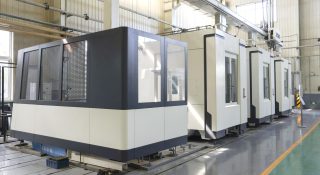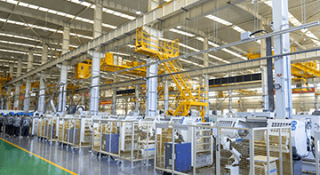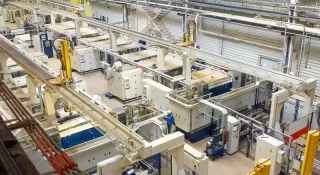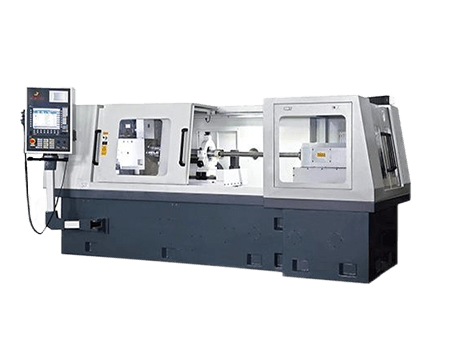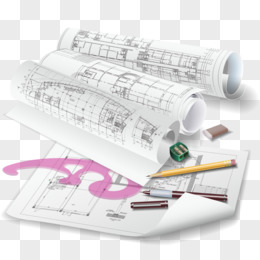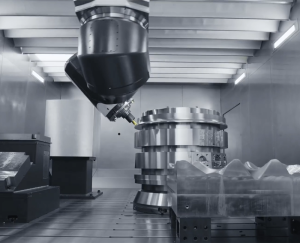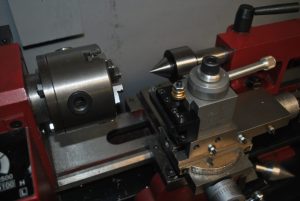Grinding is a basic process that’s been around forever and is used in all kinds of manufacturing and industrial applications. It’s critical to making high-precision parts and to getting a good finish on the things you make out of metal or other materials. If you’re involved in any kind of production or machining, you need to understand grinding. You need to understand where it came from, what it does, what it’s used for, and what the different tools are.
Grinding is a complex abrasive machining process that uses a grinding wheel as a cutting tool. It’s known for producing very fine finishes and extremely accurate dimensions on metal parts. Grinding uses a rotating grinding wheel made up of abrasive particles, which act like tiny cutting tools.
Now, let’s get into the details of what is grinding.
What is Grinding?
Grinding is a micro-machining process that uses abrasive tools and materials to create precise surface finishes. Grinding is mostly used to machine metals and other hard materials to achieve high precision and surface smoothness.
The History of Grinding
Grinding technology has a long history. Here are some key milestones:
4000 BCE: Early humans started using natural grinding stones for simple grinding tasks.
1500 BCE: Ancient Egyptians used grinding wheels to sharpen copper tools.
14th Century: Manual grinding tools became widely used in Europe to process weapons and tools.
Early 19th Century: The Industrial Revolution spurred the development of mechanized grinding machines.
1873: Brown & Sharpe introduced the world’s first universal grinding machine.
Early 20th Century: Electric grinding machines became popular, greatly improving precision and efficiency.
1950s: CNC (Computer Numerical Control) technology started being applied to grinding equipment, further improving precision and automation.
Today: Advanced grinding technologies like High-Efficiency Deep Grinding (HEDG), ultra-precision grinding, and nano-grinding are widely used in aerospace, medical equipment, and high-end manufacturing industries.
The Principles of Grinding
The basic principle of grinding is that the grinding wheel rotates, pushing abrasive particles into the workpiece surface to make micro-cuts. Each abrasive particle acts like a tiny cutting tool, continuously removing small amounts of material from the workpiece surface to achieve precise dimensions and smooth finishes.
Industries that Need Grinding
Grinding is widely used in various manufacturing processes. Here are some main application areas:
Metalworking: Grinding is extensively used in mold making, tool manufacturing, and automotive parts processing. It provides high precision and fine surface finishes, improving component performance.
Tool Manufacturing: Used to produce and refurbish tools like drills, cutters, and grinders. Grinding ensures tools stay sharp and last a long time.
Precision Engineering: Includes industries like aerospace, medical equipment, and electronics that require extremely high precision and surface quality.
Glass Processing: Grinding is essential for cutting, grinding, and polishing glass to ensure precision and aesthetics in glass products.
Ceramic Processing: Grinding is the primary method for processing ceramic parts because ceramic materials are very hard.
Composite Materials Processing: Grinding provides high precision and fine surface finishes when processing carbon fiber, glass fiber, and other composite materials.
Primary Grinding Equipment
The primary equipment used in grinding includes:
Grinding Machines
Grinding machines are the main equipment for grinding processes and are divided into surface grinders, cylindrical grinders, and internal grinders. Surface grinders are used for flat surfaces, cylindrical grinders for cylindrical surfaces, and internal grinders for internal holes.
Grinding Wheels
Grinding wheels are the key tools in grinding processes, made of abrasive materials and binders. Depending on the machining requirements, different types of grinding wheels, such as conventional grinding wheels, diamond grinding wheels, and CBN (Cubic Boron Nitride) grinding wheels, are selected.
Grinding Types
There are various types of grinding processes. Here are some common grinding techniques:
Surface Grinding
Used to machine flat surfaces and external contours. Surface grinding ensures the flatness and smoothness of the workpiece surface, suitable for large-area surface finishing.
Cylindrical Grinding
Used to machine the external surface and internal holes of cylindrical workpieces. Cylindrical grinding can be divided into external cylindrical grinding and internal cylindrical grinding.
- External Cylindrical Grinding: Machines the external surface of the workpiece.
- Internal Cylindrical Grinding: Machines the internal holes of the workpiece, commonly used for bearings and cylinders.
Centerless Grinding
Does not require clamping the workpiece. Instead, it grinds the workpiece through relative motion between the grinding wheel and the guide wheel. Centerless grinding is suitable for mass production of small parts with high efficiency and precision.
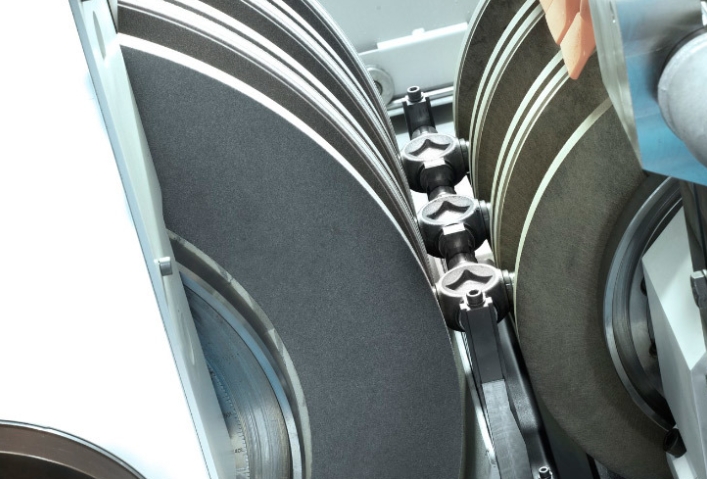
Thread Grinding
Used to machine threads, ensuring the precision and smoothness of threads, commonly used in the production of screws and nuts. Thread grinding achieves high-precision threads, often used in precision machinery and tool manufacturing.
Tool Grinding
Specialized in the production and refurbishment of tools, ensuring the sharpness and longevity of tools. Tool grinding includes grinding drills, milling cutters, and turning tools.
Form Grinding
Used to machine complex shapes of workpieces using specialized grinding wheels to achieve specific geometries. Form grinding is commonly used in mold making and the machining of complex parts.
End-face Grinding
Used to machine the end faces of workpieces, commonly used for the end-face finishing of shafts and cylindrical parts. End-face grinding ensures the flatness and perpendicularity of the end faces.
Gear Grinding
Specialized in the production and refurbishment of gears, ensuring the precision and smoothness of gear teeth. Gear grinding can be divided into gear profile grinding and gear end-face grinding.
Internal and External Grinding
Simultaneously machines the internal and external diameters of workpieces, commonly used for parts that require high-precision coaxiality. Internal and external grinding usually uses compound grinding machines, achieving synchronous machining of internal and external diameters through a single clamping.
Grinding Tools
Common grinding tools include:
- Conventional Grinding Wheels: These are made of abrasive materials and binders and are the most common grinding tools. The material, hardness, and grain size of the grinding wheel vary depending on the machining requirements.
- Diamond Grinding Wheels: These are used for precision grinding of hard materials. Diamonds are very hard and can machine extremely hard materials, such as cemented carbide and ceramics.
- CBN Grinding Wheels: These are suitable for grinding high-speed steel, tool steel, and other difficult-to-machine materials, offering high wear resistance and thermal stability.
- Abrasive Discs: These are used with handheld grinding tools and are suitable for grinding and polishing small areas and hard-to-reach parts.
- Grinding Heads: These are mounted on grinding machines for internal cylindrical grinding and the machining of complex shapes.
- Belt Grinding Tools: These use abrasive belts for grinding and are suitable for large workpieces and the grinding of complex shapes.
- Lapping Paste: This is used for fine grinding and polishing by applying it to the workpiece surface and applying frictional force.
- Ultrasonic Grinding Tools: These use high-frequency vibrations and abrasives to grind workpieces and are suitable for precision machining of delicate parts.
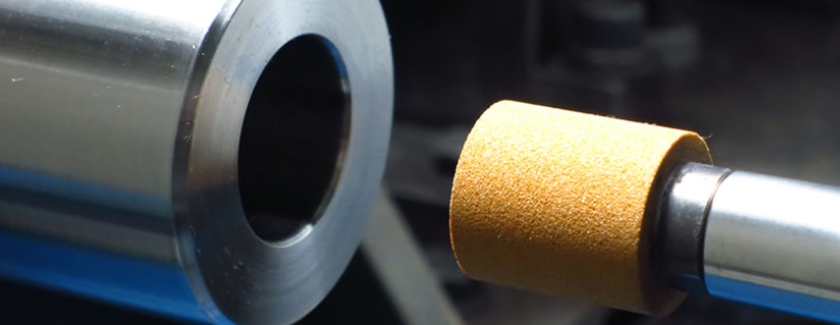
Materials Suitable for Grinding
Grinding is suitable for various materials, including but not limited to:
- Metals: Such as steel, cast iron, aluminum alloys, etc. Grinding provides high precision and fine surface finishes.
- Non-metals: Such as ceramics, glass, quartz, etc. Grinding ensures the precision and aesthetics of these materials.
- Composite Materials: Such as carbon fiber composites, glass fiber composites, etc. Grinding meets the requirements of high strength and high precision machining.
Grinding plays a significant role in modern manufacturing. Understanding its basic principles and applications helps improve production efficiency and product quality. By mastering grinding technology, engineers, procurement specialists, and small workshop owners can better select and use grinding tools, enhancing machining precision and product performance.


